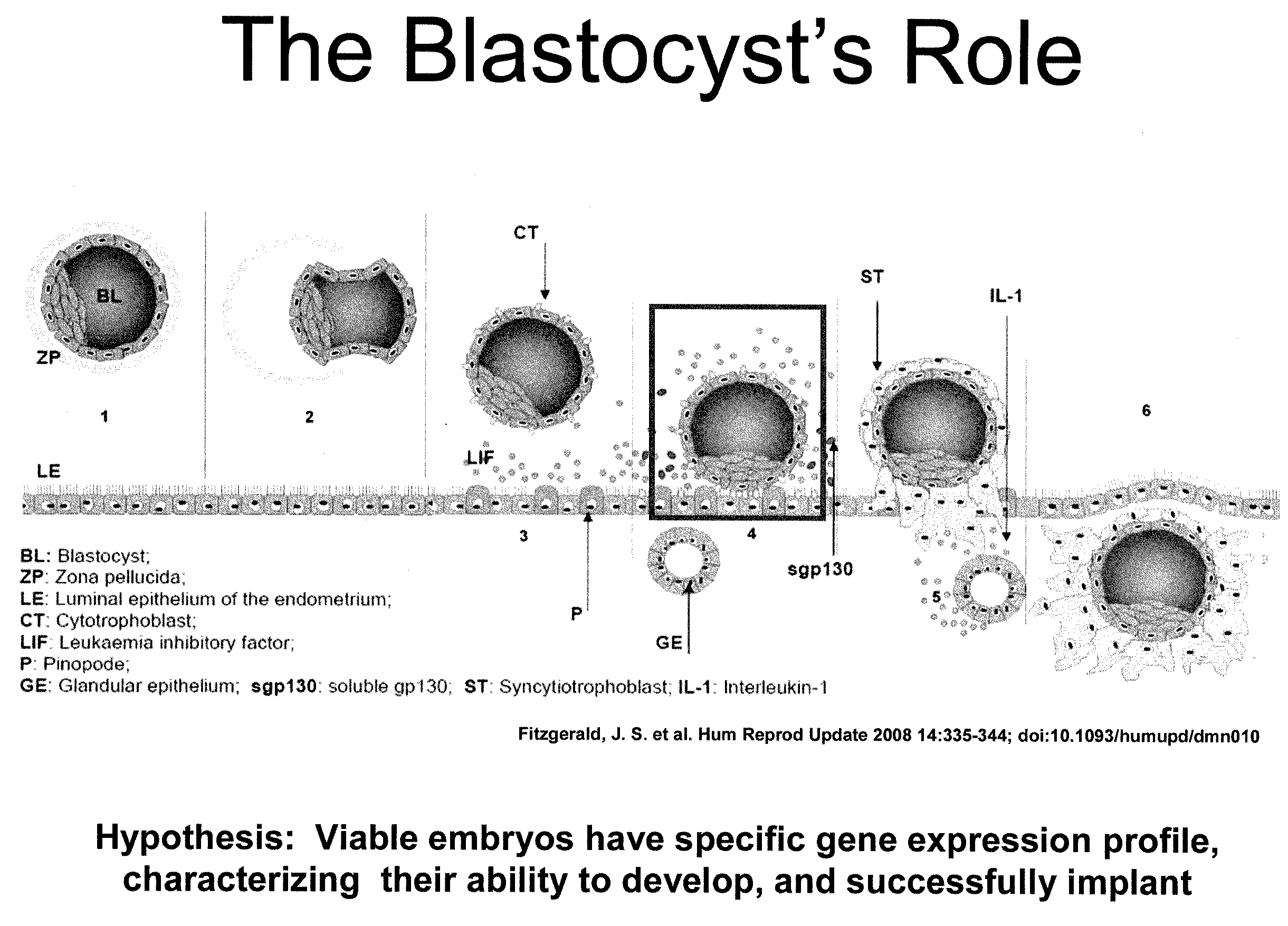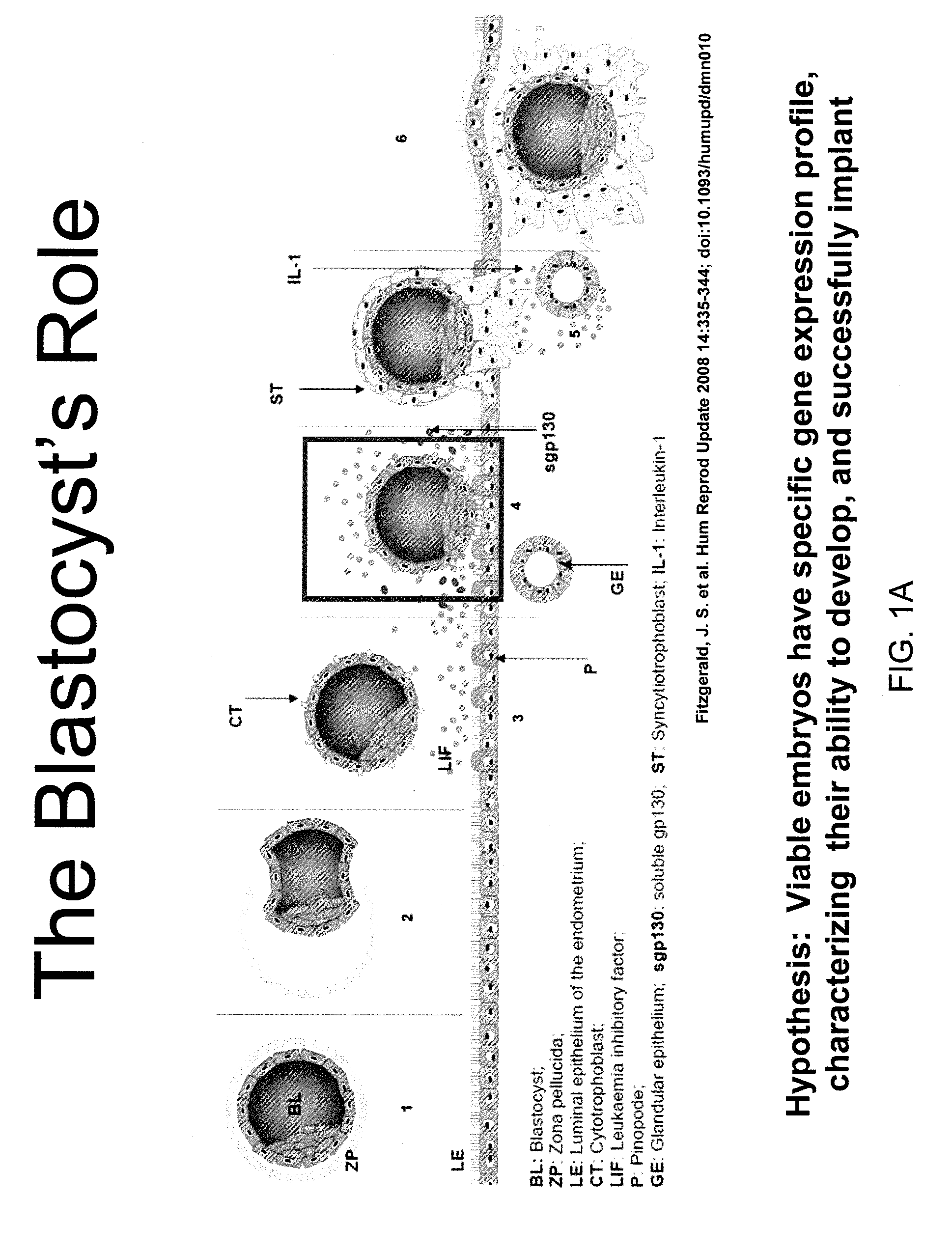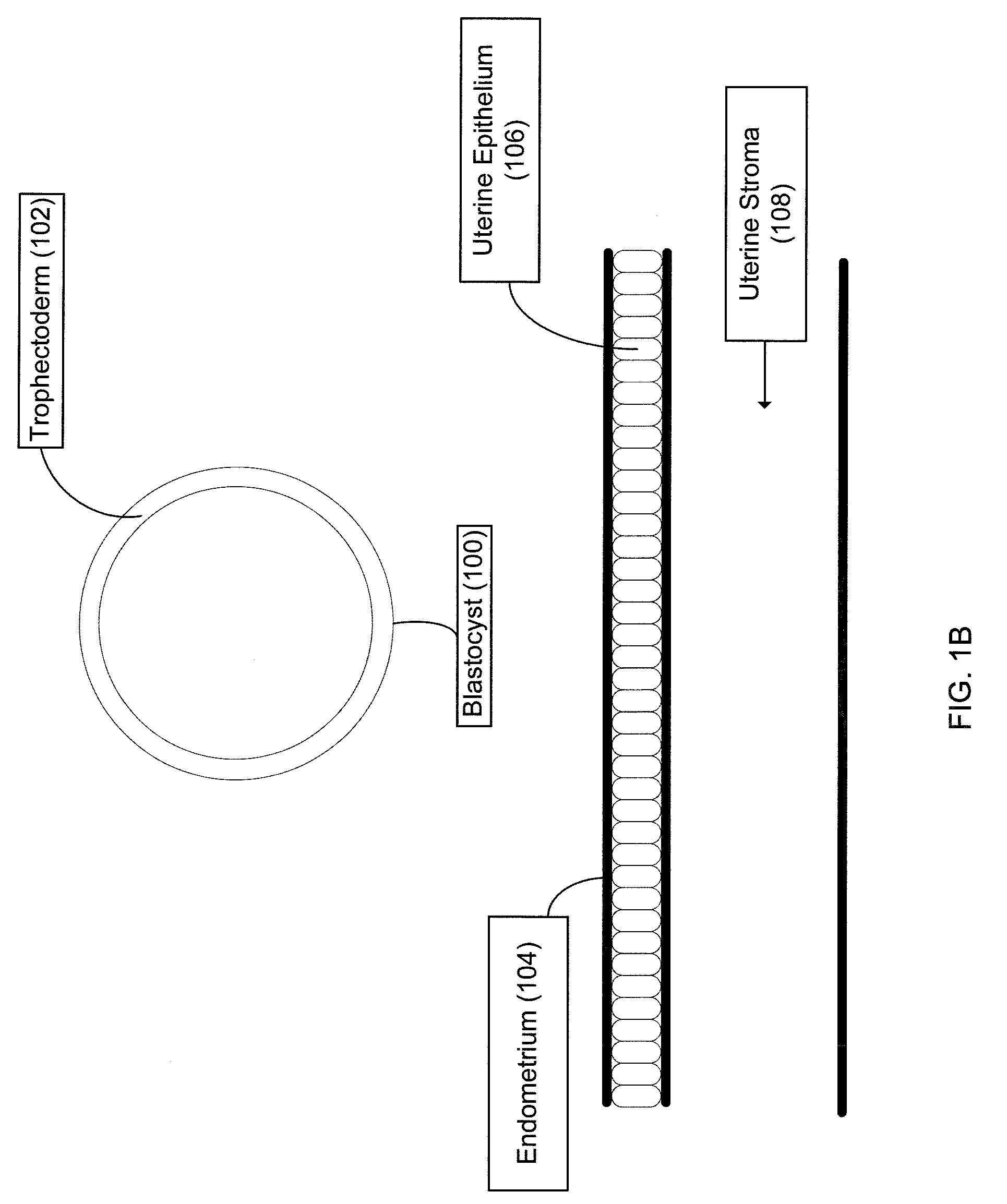Gene Expression Profile-Facilitated In Vitro Fertilization
- Summary
- Abstract
- Description
- Claims
- Application Information
AI Technical Summary
Benefits of technology
Problems solved by technology
Method used
Image
Examples
example 1
Relating Gene Expression Profile to Implantation Success or Failure in a Murine Model
[0048]As illustrated in FIG. 4, female BDF-1 mice were superovulated via gonadotrophin injections prior to matings. At 22 hours post-injection, the zygotes were collected and group cultured in microdrops of G1 under an oil overlay at 37° C., 5% O2 and 6% CO2 for 48 hours, after which they were transferred into G2 blastocyst stage culture media for a further 48 hours. The identification of hatching blastocysts for biopsy occurred early on the fifth day. Using a laser, herniating TE cells were biopsied to obtain material for gene expression analysis. A single blastocyst, with a known gene expression profile, was implanted into a mouse and further permitted to develop for sixteen days. On the sixteenth day, fetal dissection occurred to investigate the embryo implantation success.
[0049]FIG. 5 demonstrates the process of gene expression analysis to measure the expression profile of one or more genes impl...
example 2
Relating Gene Expression Profile to Implantation Success or Failure of a Human Embryo
[0063]Human cleavage-stage embryos are cultured in 10 μL drops of G1 supplemented with 2.5 mg / mL recombinant albumin under oil at 37° C., 6% CO2, 5% O2 for 24 hours. The embryos are washed twice in G2 culture media and further cultured in 10 μL drops of G2 supplemented with 2.5 mg / mL recombinant albumin under oil at 37° C., 6% CO2, 5% O2 for 48 hours with a fresh drop of G2 media added after 24 hours. At day 5, the human blastocyst TE cells are biopsied using a laser to obtain genetic material for gene expression profiling.
[0064]FIG. 18 illustrates a process for determining a gene expression profile to indicate the potential for implantation success of a blastocyst (1900). As shown in FIG. 18, a blastocyst (1900) originating from a fertilized egg of patient (1902) is biopsied for trophoblast cells (1904). The genetic material from the trophoblast cells (1904) is extracted and amplified using PCR. In...
PUM
| Property | Measurement | Unit |
|---|---|---|
| Gene expression profile | aaaaa | aaaaa |
Abstract
Description
Claims
Application Information
 Login to View More
Login to View More - R&D
- Intellectual Property
- Life Sciences
- Materials
- Tech Scout
- Unparalleled Data Quality
- Higher Quality Content
- 60% Fewer Hallucinations
Browse by: Latest US Patents, China's latest patents, Technical Efficacy Thesaurus, Application Domain, Technology Topic, Popular Technical Reports.
© 2025 PatSnap. All rights reserved.Legal|Privacy policy|Modern Slavery Act Transparency Statement|Sitemap|About US| Contact US: help@patsnap.com



